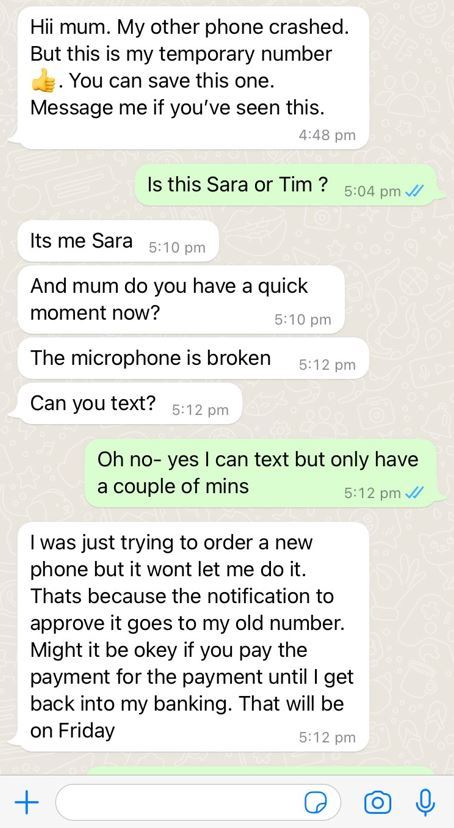Fresh scam warnings rise after millions stolen
Laura Williams
27 August 2022, 3:40 AM

As protections against scammers ramp up, so too does the sophistication of scam artists as Australia reports a concerning amount of losses from the public.
With an increasing number of text scams circulating through Australia, scammers are using a sense of urgency to obtain information and money, according to Crime Stoppers NSW CEO Peter Price.
“This kind of tactic should be a red flag. The longer someone is on the phone with the scammer, the more information they extract. We strongly encourage people to say goodbye and hang up,” Mr Price said.
This month, Scamwatch has warned the public of ‘Hi Mum’ scams, which over 1,000 Australians have fallen victim to so far, where a scammer poses as a family member or friend.
.
The scammer will claim they have lost or damaged their phone and are making contact from a new number.
Then, once they have developed a rapport with their target, the scammer will ask for personal information such as photos for their social media profile or money to help urgently pay a bill, contractor or replace the phone.

The 'Hi Mum' scam takes advantage of parents offering help. (Via Tim Crakenthorp)
“If you receive a text message from an unknown number or entity, take the time to think before you click. Check if it looks legitimate, and if it doesn’t, delete it,” Mr Price said.
The ATO has also seen an increase in text scams during tax time, using the lure of a tax refund to trick people into clicking on a link.
ATO Assistant Commissioner Tim Loh, said, “These links trick unsuspecting Australians into visiting fake websites aimed at stealing their personal information. Once a scammer has this information, they can do a lot of damage with it.”
“Our reminder is to guard your personal and financial information and always be careful about links and attachments, even if messages seem legitimate. The ATO will never send you an email or SMS with a link to log in to an online service.”
Australians have lost on average $41 million per month in scams in the first six months of 2022. In the last year, more than $2 billion in total combined losses were reported.
This is despite 660 million scam calls being blocked since new rules were implemented in late 2020, requiring telcos to detect, trace and block scam calls.
110 million scam calls were blocked in April to June 2022 alone.
The ACCC advises if you think something might be legitimate, call the organisation or government agency back using details you find in an independent search, rather than the details provided by the caller.
In addition, reporting the scam may help you and others. You can contact your financial institution or click here to report it to Scamwatch.




